Last summer I shared my 50 Ideas for Summer Fun. It seemed like many people enjoyed the list and appreciated a few new suggestions. This year I thought I would put out a list of summer outings we hope to take. Each outing will include numerous places to visit. Art, history, nature, the strange and unusual are all included. We’ll venture around the city, the suburbs and even head downstate. The location mentioned in the title of each outing, is only the starting point. Many of the outings take us to numerous Chicago neighborhoods or various suburbs. You will notice that almost every outing has a stop for a sweet treat. Sometimes children (of any age) need a little motivation when venturing out with mom (or dad). I have found that sometimes the quickest way to stimulate enthusiasm for summer outings is through the stomach. I hope this list inspires you to get out and enjoy the wonderful things this city and state have to offer.
Outing #1 – Bartlett, Illinois
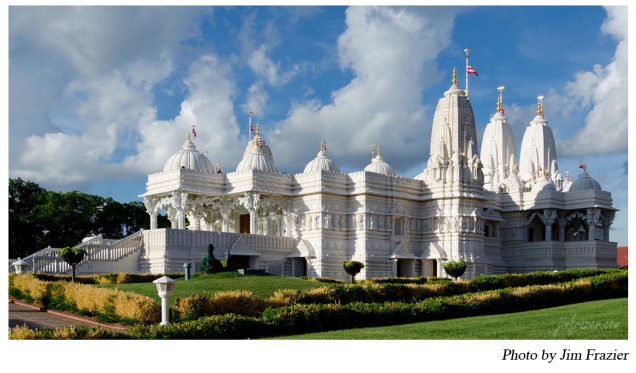
We are going to take a trip to India! Actually, we’ll be traveling to Bartlett, IL (1 hour drive from north side of Chicago) to see the awe-inspiring BAPS Shri Swaninarayan Santhsa Mendir (1851 S. IL Route 59).
“BAPS is a spiritual and humanitarian Hindu organization dedicated to serving humanity by caring for individuals, families and society. A dedicated force of thousands of volunteers offers over 12 million volunteer hours every year to serve the community through various health, education, disaster relief and environmental protection projects. BAPS Shri Swaminarayan Mandir, Bartlett , IL is one of the Mandirs. The Mandir is a place of worship and prayer for followers of Hinduism. The structure itself is built according to the Shilpa Shastra, a collection of architectural treatises that have been an integral part of Indian architecture and engineering for thousands of years. The sacred images and ceremonies of worship in the Mandir form the very core in elevating the soul to the pinnacle of God-realization according to Hindu philosophy. Swaminarayan Mandirs, worldwide, fulfill the ancient and lofty concept of the Hindu tradition of Mandirs.” – BAPS website
Last summer we visited the Bahá’í Temple in Wilmette. We enjoyed learning about the Bahá’í faith and seeing where their followers worshiped. The trip out to Bartlett will give us a better understanding of Hinduism. A religion, that some scholars believe to be the oldest, dating back over 4000 years. It is also the third largest religion behind Christianity and Islam.
**Take Note: No sleeveless tops or shorts are allowed.
While we are out in the Bartlett area, we also might check out the Sheldon Peck Homestead (355 E. Parkside Ave., Lombard).
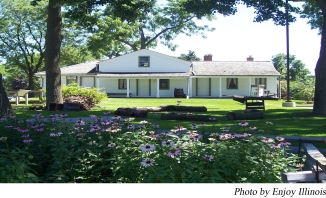 “The oldest house in Lombard (formerly Babcock’s Grove) was originally home to well known folk artist Sheldon Peck, who helped many people traveling to freedom via the Underground Railroad. The clapboard house, built by Peck in 1839, gave shelter to Freedom Seekers throughout the 1850s.” – Atlas Obscura
“The oldest house in Lombard (formerly Babcock’s Grove) was originally home to well known folk artist Sheldon Peck, who helped many people traveling to freedom via the Underground Railroad. The clapboard house, built by Peck in 1839, gave shelter to Freedom Seekers throughout the 1850s.” – Atlas Obscura
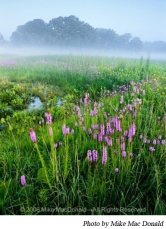 We’ll go have a picnic lunch at the Bluff Spring Fen in Elgin. It is 160 acres of forest preserve that was once a dumping site and gravel quarry. It is named for its rare fen, a type of wetland fed by mineral-rich springs. What makes this very interesting is that the spring water stays a constant 50 degrees year round. This allows streams to flow, no matter the season and supports an unusual assortment of plants and animals adapted to these steady, alkaline conditions.
We’ll go have a picnic lunch at the Bluff Spring Fen in Elgin. It is 160 acres of forest preserve that was once a dumping site and gravel quarry. It is named for its rare fen, a type of wetland fed by mineral-rich springs. What makes this very interesting is that the spring water stays a constant 50 degrees year round. This allows streams to flow, no matter the season and supports an unusual assortment of plants and animals adapted to these steady, alkaline conditions.
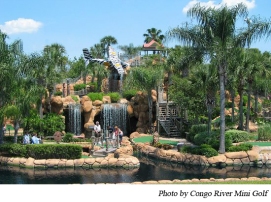 Now, packing the day with religion, history and a nature walk, may not go over well with a lot of kids. Personally, I think once they get out there and see everything, they’ll be impressed. However, for the stubborn eggs, a visit to the Congo River Miniature Golf, might crack their shell. What kid does not like miniature golf? Take in 36 or 18 holes of African jungle themed mini golf. Children 12 and under are $8.50 for 18 holes (if you get in before noon it’s $7.50). Also, be sure to take advantage of their $1 off coupon.
Now, packing the day with religion, history and a nature walk, may not go over well with a lot of kids. Personally, I think once they get out there and see everything, they’ll be impressed. However, for the stubborn eggs, a visit to the Congo River Miniature Golf, might crack their shell. What kid does not like miniature golf? Take in 36 or 18 holes of African jungle themed mini golf. Children 12 and under are $8.50 for 18 holes (if you get in before noon it’s $7.50). Also, be sure to take advantage of their $1 off coupon.
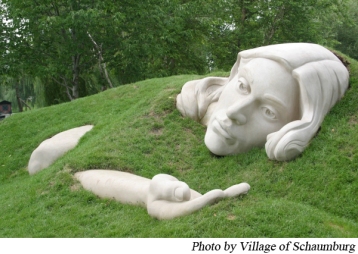 Lastly, a quick stop in Schaumburg to check out The Awaking Muse. It’s not every day you see a 40 feet sculpture, depicting a female figure inspired by Greek mythology, awakening from her sleep. It was created by Don Lawler and Meg White and installed June 2006. The Awaking Muse is located at the Prairie Center, 201 Schaumburg Court, Schaumburg.
Lastly, a quick stop in Schaumburg to check out The Awaking Muse. It’s not every day you see a 40 feet sculpture, depicting a female figure inspired by Greek mythology, awakening from her sleep. It was created by Don Lawler and Meg White and installed June 2006. The Awaking Muse is located at the Prairie Center, 201 Schaumburg Court, Schaumburg.
So, in case you were wondering our route for this busy day, it would look like something like this, a bit of a circle.
Starting at #1 Sheldon Peck Homestead, then on to #2 BAPS, #3 Bluff Spring Fen, #4 Congo River Miniature Golf and lastly to #5 Awaking Muse.
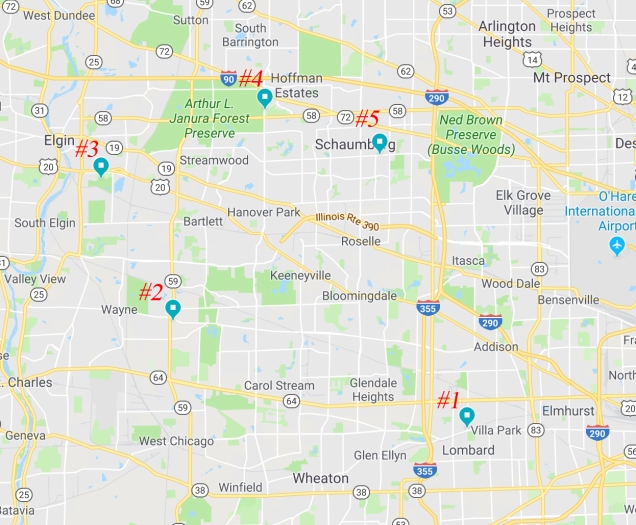
Outing #2 – Batavia, Illinois
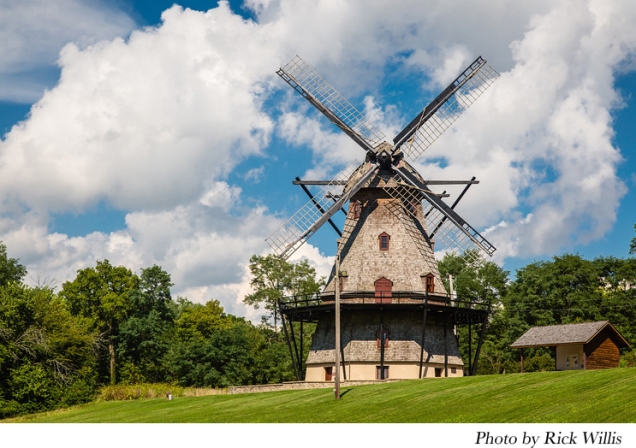
Batavia is home to the Fabyan Windmill. It is one of the best examples of an authentic Dutch windmill in the United States. It is located 1500 Crissey Ave., Batavia, IL
‘The 68-foot, 5-story structure was originally built by Louis Blackhaus, a German craftsman, between 1850 and 1860. After years of planning and effort to restore the historic Fabyan Windmill to its original grandeur, including a trip to the Netherlands for authentic timber and great work, the Windmill made its public debut in June 2005 with a Grand Reopening Celebration.” – Kane County Forest Preserve
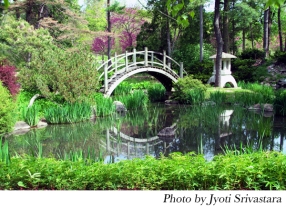 Right across the Fox River, from the Fabyan Windmill is the Fabyan Japanese Garden. Located at 1925 S. Batavia Ave., Geneva, IL. Take note that the garden is only open on Wednesdays from 1-4pm, Thursdays from 1-4pm and Sundays 1-4:30pm.
Right across the Fox River, from the Fabyan Windmill is the Fabyan Japanese Garden. Located at 1925 S. Batavia Ave., Geneva, IL. Take note that the garden is only open on Wednesdays from 1-4pm, Thursdays from 1-4pm and Sundays 1-4:30pm.
“Installed c. 1910, the Japanese Garden is a tranquil oasis where history melds with nature and design. George and Nelle Fabyan developed an intense appreciation for Japanese culture after visiting Chicago’s 1893 Columbian Exposition, which featured a Japanese Pavilion. After moving from Chicago to their “villa” outside of Geneva, they commissioned renowned landscape designer Taro Otsuka to design a Japanese style garden on their property. The nearby river and surrounding woods provided a perfect canvas for a Japanese-style garden, which relies on borrowed scenery for its naturalized vistas.” – Preservation Partners of the Fox Valley
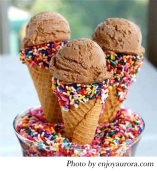 After visiting the Dutch windmill and Japanese garden, there is no doubt we will be in need of some ice cream. Luckily the Batavia Creamery is only five minutes away. Located at 4 N. Island Ave., Batavia, IL. Choosing a flavor may prove to be challenging. They have over 100 rotating flavors.
After visiting the Dutch windmill and Japanese garden, there is no doubt we will be in need of some ice cream. Luckily the Batavia Creamery is only five minutes away. Located at 4 N. Island Ave., Batavia, IL. Choosing a flavor may prove to be challenging. They have over 100 rotating flavors.
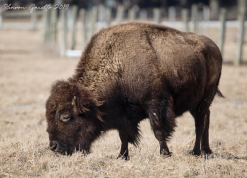 Before we head home, we will make a quick stop by the Fermilab. There have been some new additions to the bison herd. Yes, you read that correctly! Bison in Batavia. The first baby bison of the season was born on April 20th. Fermilab was expecting 12 to 14 new calves. They will most likely be a lot bigger by the time we see them, but undoubtedly still adorable. Located at Pine Street and Kirk Road, Batavia, IL.
Before we head home, we will make a quick stop by the Fermilab. There have been some new additions to the bison herd. Yes, you read that correctly! Bison in Batavia. The first baby bison of the season was born on April 20th. Fermilab was expecting 12 to 14 new calves. They will most likely be a lot bigger by the time we see them, but undoubtedly still adorable. Located at Pine Street and Kirk Road, Batavia, IL.
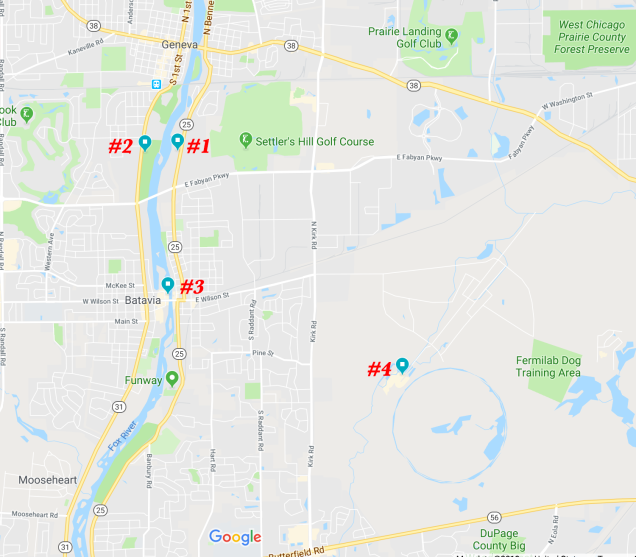
Outing #3 – Berwyn, Illinois
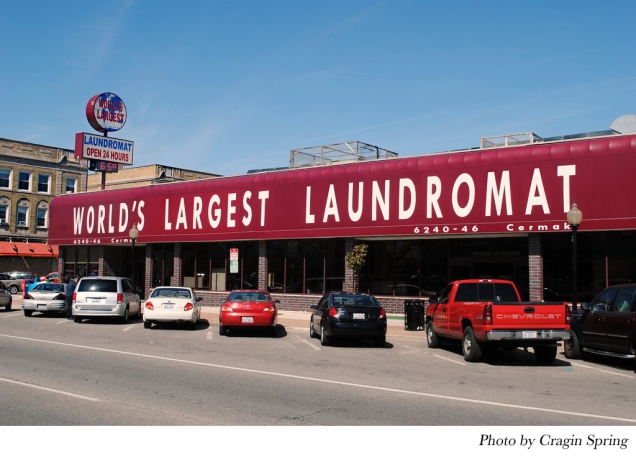
Did you know the World’s Largest Laundromat is located in Berwyn? We didn’t either! I am not one to visit laundromats, though I should (feels like I do laundry 24/7), I thought it would be cool to check out the World’s Largest. Don’t plan on doing any laundry when we stop by, but we’ll check out the 300 machines, gasp at the enormity of the facility and go about our day. Located at 6246 W. Cermak Road, Berwyn, IL. A side note, World’s Largest Laundromat is a proud sponsor of Berwyn’s Independence Day fireworks display.
 While in Berwyn we will definitely go out to lunch with Aunt Jaime. Now, unfortunately, not everyone has an Aunt Jaime, but maybe you can find a friend or relative that lives near Berwyn that you can make lunch plans with. The Gaietto kids have a long standing tradition of brunch, lunch and dinner dates with Aunt Jaime and Uncle Mike, so there’s no doubt she will find the perfect spot for us to grab a bite.
While in Berwyn we will definitely go out to lunch with Aunt Jaime. Now, unfortunately, not everyone has an Aunt Jaime, but maybe you can find a friend or relative that lives near Berwyn that you can make lunch plans with. The Gaietto kids have a long standing tradition of brunch, lunch and dinner dates with Aunt Jaime and Uncle Mike, so there’s no doubt she will find the perfect spot for us to grab a bite.
 Hopefully, we have saved some room for dessert. This is not just any dessert, it’s funnel cake! Now, if you’re like me, the only time I have funnel cake is at a visit to Great America. So, to grab this delicious treat without the outrageous ticket price and queasy stomach is an absolute bonus. Polar Bear, on 7901 W. Cermak Road, North Riverside, IL., offers this delicacy, along with many other frozen goodies.
Hopefully, we have saved some room for dessert. This is not just any dessert, it’s funnel cake! Now, if you’re like me, the only time I have funnel cake is at a visit to Great America. So, to grab this delicious treat without the outrageous ticket price and queasy stomach is an absolute bonus. Polar Bear, on 7901 W. Cermak Road, North Riverside, IL., offers this delicacy, along with many other frozen goodies.
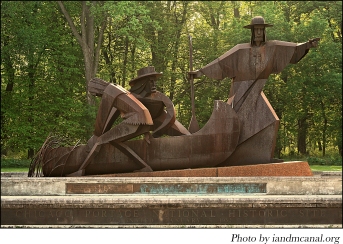 After filling our bellies we will take a walk around the Chicago Portage National Historic Site, located at 4800 S. Harlem Ave., Forest View, IL.
After filling our bellies we will take a walk around the Chicago Portage National Historic Site, located at 4800 S. Harlem Ave., Forest View, IL.
“One of only three National Historic Sites in Illinois, the Chicago Portage site is a major remnant of the discovery and settlement of Chicago. The Chicago Portage National Historic Site is located in Portage Woods Forest Preserve and Ottawa Trail Woods Forest Preserve. This is the only place where you can stand on the same ground walked upon by the explorers, early settlers and creators of Chicago. You can stand on the footbridge over the short remnant of Portage Creek, stretch out your arms and know that Jolliet, Marquette, LaSalle, Tonti, Point du Sable, Kinzie, Hubbard, Ogden, and countless anonymous others from the discovery, exploration and creation of Chicago passed within an arm’s length of you.” – enjoyillinois.com
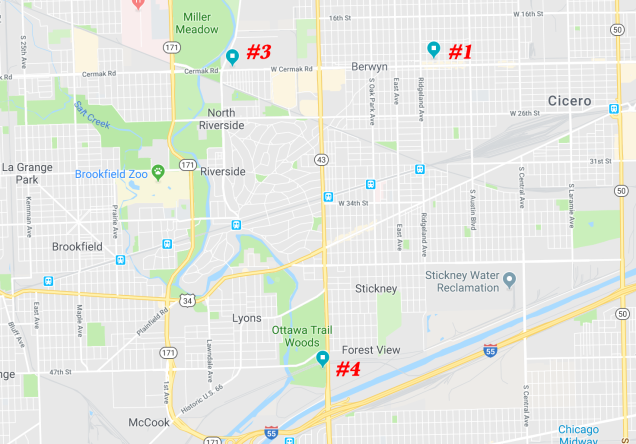
Outing #4 – Casey, Illinois

Last summer, I took the kids to see a door. There were many questions and some skepticism as we made our way to see the door. What the kids didn’t know was that this was no ordinary door, it was a Monster Door. They loved that door and it is still one of our favorite stops last summer.
So, when coming up with some ideas for summer outings, it only made sense to go down to Casey, Illinois, home to many of the World’s Largest Items. They have the world’s largest wind chime, golf tee, wooden shoes, pitch fork, mailbox and rocking chair. They also have big stuff, too. A big pencil, yardstick, spinning top, bird cage and baseball bat are just a few of the oversized items that can be found. Now, before jumping in the car and heading down to Casey, Illinois, you better make sure your kids are amused by large items. The ride down to the Small Town of Big Things is a long one. The drive is about 3.5 hours from Chicago. I know for the Gaietto kids, seeing the humongous objects will be well worth the trip.
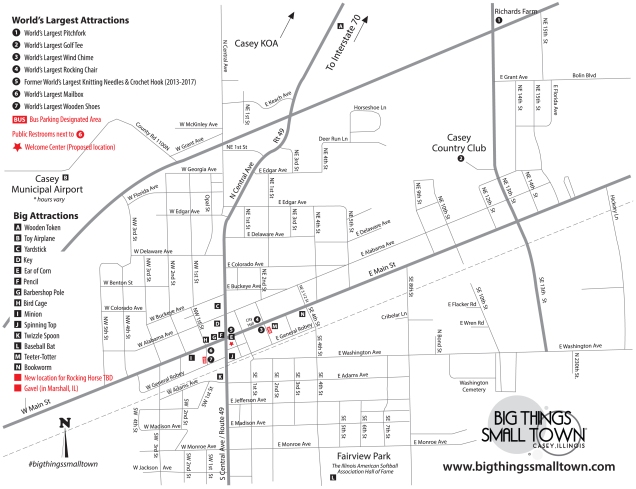
Outing #5 – Downtown, Chicago
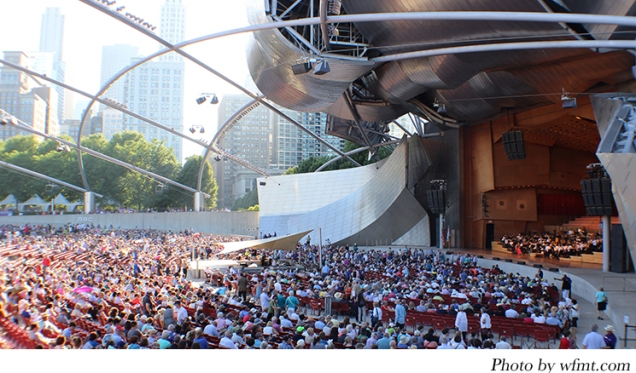
Summertime in Chicago and outdoor music go hand and hand. If I can find opportunities to listen to great music without the crazy crowds, I’m going to jump at it. The Grant Park Orchestra and Chorus offers open rehearsals (June 11 – August 16) at the Jay Pritzker Pavilion (201 E. Randolph Street).
- Tuesdays from 11AM-1:30PM and 3PM-5:30PM
- Wednesdays from 11AM-1:30PM
- Thursdays from 10:30AM-1PM
- Fridays from 11AM-1:30AM
Our plan is to pack a lunch and have a picnic on the lawn while listening to the melodious sounds of the instruments. Afterwards, I’m sure I’ll get talked into a quick stop at Maggie Daley Park or the Crown Fountain. We shall see.
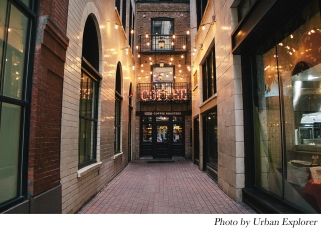 After leaving Millennium Park, we’re going to head south down Michigan Ave. to Jackson Blvd. At 22 E. Jackson Blvd. is Pickwick Lane. It’s a little unclear on what you would call Pickwick Lane. It’s not a street or an alley. However, one thing is very obvious, it’s a unique part of Chicago history. The building at the end of the brick pavement is now a coffee house. Back in 1871 it was a stable, which was consumed by the Great Chicago Fire. Later it was resurrected as a chop house. I won’t be stopping in to purchase a coffee, but it will be pretty cool to walk along Pickwick Lane and imagine the amount of history that has traveled along that brick street.
After leaving Millennium Park, we’re going to head south down Michigan Ave. to Jackson Blvd. At 22 E. Jackson Blvd. is Pickwick Lane. It’s a little unclear on what you would call Pickwick Lane. It’s not a street or an alley. However, one thing is very obvious, it’s a unique part of Chicago history. The building at the end of the brick pavement is now a coffee house. Back in 1871 it was a stable, which was consumed by the Great Chicago Fire. Later it was resurrected as a chop house. I won’t be stopping in to purchase a coffee, but it will be pretty cool to walk along Pickwick Lane and imagine the amount of history that has traveled along that brick street.
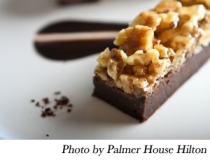 After our brief stop at Pickwick Lane, we’ll head to the Palmer House (17 E. Monroe Street) to continue our history lesson. We’ll first walk through the grand lobby (the hotel is a member of the Historic Hotels of America) and appreciate the architecture and decor, but then it’s on to Potter’s Burger Bar (located in the hotel) to try the very first brownie. No, we will not be eating the original brownie, but it is the original recipe. The restaurant serves it with ice cream, too!
After our brief stop at Pickwick Lane, we’ll head to the Palmer House (17 E. Monroe Street) to continue our history lesson. We’ll first walk through the grand lobby (the hotel is a member of the Historic Hotels of America) and appreciate the architecture and decor, but then it’s on to Potter’s Burger Bar (located in the hotel) to try the very first brownie. No, we will not be eating the original brownie, but it is the original recipe. The restaurant serves it with ice cream, too!
“The first reference to the “brownie” in America appears in the Sears Roebuck Catalog published in Chicago in 1898. Specifically at the direction of Bertha Palmer to be served at the Columbian Exposition World’s Fair in 1893, the brownie was created in the Palmer House Kitchen in the late 19th century.” – Palmer House
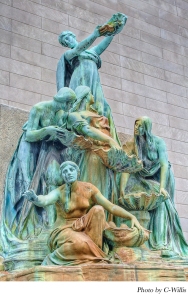 After indulging in a historic masterpiece of chocolate and walnuts, we’re going to get back outside and enjoy our last stop, a walk through the Art Institute’s South Garden (just south of 111 S. Michigan Ave.). We will check out the Fountain of the Great Lakes, created by Chicago sculptor, Lorado Taft.
After indulging in a historic masterpiece of chocolate and walnuts, we’re going to get back outside and enjoy our last stop, a walk through the Art Institute’s South Garden (just south of 111 S. Michigan Ave.). We will check out the Fountain of the Great Lakes, created by Chicago sculptor, Lorado Taft.
“Completed in 1913, this monumental fountain includes five bronze nymphs depicted in draped clothing representing each of America’s Great Lakes. They are positioned in the same configuration as the Great Lakes, the figures each hold a shell and spill water to the next, emulating the flow of the vast Midwestern fresh water system.” – Chicago Park District
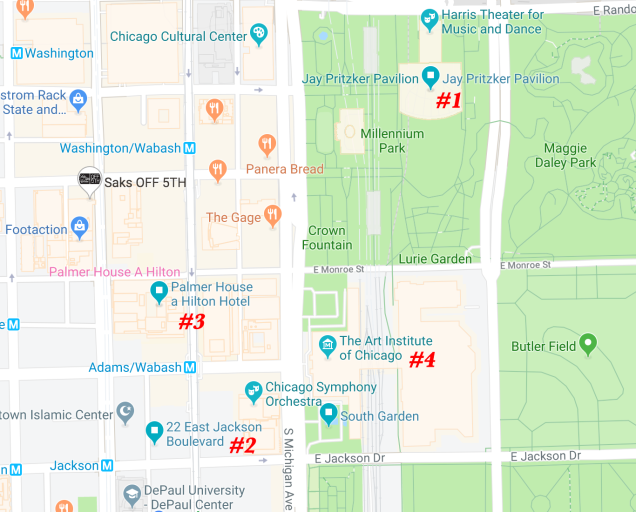
Outing #6 – Edgewater, Chicago

This is the only outing where the sweet treat is the main objective. We have been wanting to visit Gordo’s Ice Cream (1120 W. Granville Ave.) for sometime now. The idea of creating your own ice cream bars, with toppings like toasted almonds, candy confetti, fruity pebbles, mini chocolate chips, oreo and peanuts is a dream come true. The possibilities are endless and I’m very curious to see what the Gaietto kids will come up with.
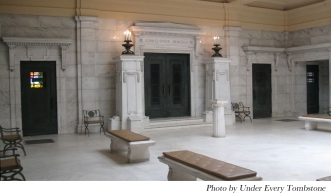 Now, once the kids are all happy and super psyched about their ice cream bars, I’m going to fill them in on the next stop. This spot was on last summer’s list, but we never paid a visit. The kids have been giving me a little push back on this location. I’m not sure why. What kid doesn’t want to visit a cemetery? Yes, I know, not many kids, if any, want to visit the dearly departed. However, this is not any old cemetery, it’s Chicago’s largest, Rosehill Cemetery (5800 N. Ravenswood Ave). Many famous Chicagoans are buried here, like Oscar F. Mayer, John G. Shedd, and Richard Sears, just to name a few.
Now, once the kids are all happy and super psyched about their ice cream bars, I’m going to fill them in on the next stop. This spot was on last summer’s list, but we never paid a visit. The kids have been giving me a little push back on this location. I’m not sure why. What kid doesn’t want to visit a cemetery? Yes, I know, not many kids, if any, want to visit the dearly departed. However, this is not any old cemetery, it’s Chicago’s largest, Rosehill Cemetery (5800 N. Ravenswood Ave). Many famous Chicagoans are buried here, like Oscar F. Mayer, John G. Shedd, and Richard Sears, just to name a few.
There is a very good chance my kids will really not want to go and of course, I won’t make them (unlike other outings). So, I just might have to check out one of the free tours (2 hours) they offer on the second Saturday of every month (April thru October) at 10am. They meet at the front entrance on Ravenswood.
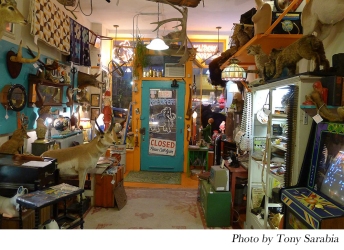 Last stop is at Woolly Mammoth Chicago Antiques and Oddities (1513 W. Foster Ave). There’s no better way to explain what exactly Woolly Mammoth is, then through Woolly Mammoth’s very own description;
Last stop is at Woolly Mammoth Chicago Antiques and Oddities (1513 W. Foster Ave). There’s no better way to explain what exactly Woolly Mammoth is, then through Woolly Mammoth’s very own description;
“Woolly Mammoth is a brick and mortar retail store and curiosity cabinet of odd, amusing & eclectic items resurrected from the past. We specialize in vintage & antique taxidermy, anatomy items, medical stuffs, books, toys, skulls, bones, skeletons, military, funerary, art, charts, maps, tools, specimens, natural history, science, culture, industrial.” – Woolly Mammoth Chicago Antiques and Oddities
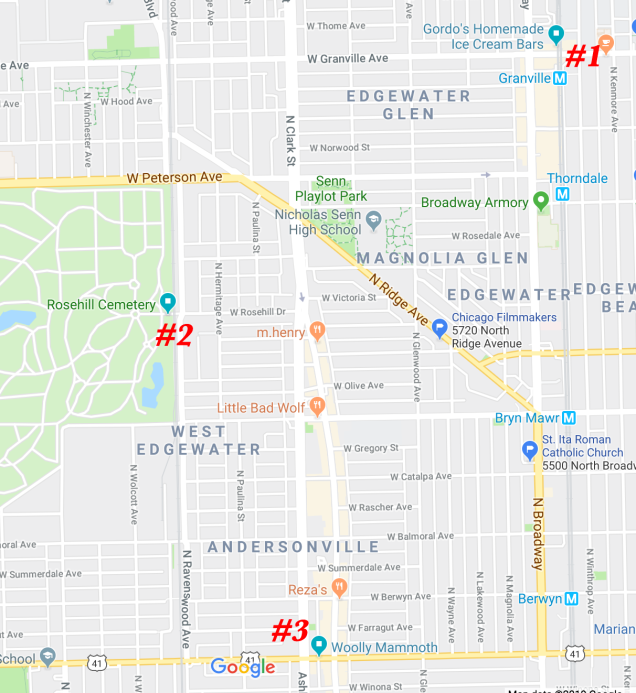
Outing #7 – Elmwood Park, Chicago
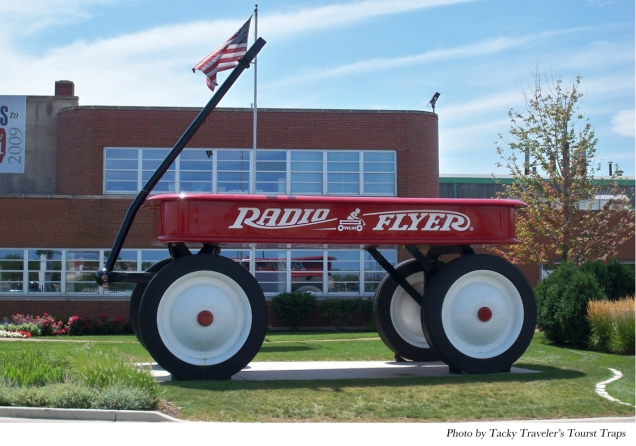
I first saw the World’s Largest Radio Flyer at Navy Pier, 20 years ago. I was pretty impressed with its size and thought it was a pretty cool piece of nostalgia. There’s no doubt the kids will agree that this humungous wagon is worth the short trip out to Elmwood Park (6515 W. Grand Ave, Chicago). I’m about 98% sure that the wagon is on the premises were the offices of Radio Flyer is located. We’ll head out there and check it out and report back.
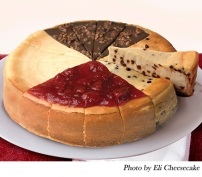 We are then going to be sure we plan our visit to the Eli Cheesecake Company (6701 W. Forest Preserve Drive, Chicago) for 1pm. Why 1pm, you ask? Well, you can take part in their complimentary Tasting & Traditions experience which is offered daily at 1 PM in their cafe. The experience is a PowerPoint and video presentation of the history of the company and how they make their cheesecake lead by one of their café associates. At the conclusion you sample a selection of their delicious desserts. The presentation last about 30-45 minutes.
We are then going to be sure we plan our visit to the Eli Cheesecake Company (6701 W. Forest Preserve Drive, Chicago) for 1pm. Why 1pm, you ask? Well, you can take part in their complimentary Tasting & Traditions experience which is offered daily at 1 PM in their cafe. The experience is a PowerPoint and video presentation of the history of the company and how they make their cheesecake lead by one of their café associates. At the conclusion you sample a selection of their delicious desserts. The presentation last about 30-45 minutes.
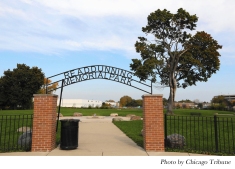 After sampling the best cheesecake in Chicago we are going to make a stop at the Read Dunning Memorial Park (6596 W. Belle Plaine Ave, Chicago). This park is a memorial for Chicago’s forgotten. Many mentally ill and poor residents of Chicago were buried here in mass graves. We will pay our respects for those who were ignored and prayer they are at peace.
After sampling the best cheesecake in Chicago we are going to make a stop at the Read Dunning Memorial Park (6596 W. Belle Plaine Ave, Chicago). This park is a memorial for Chicago’s forgotten. Many mentally ill and poor residents of Chicago were buried here in mass graves. We will pay our respects for those who were ignored and prayer they are at peace.
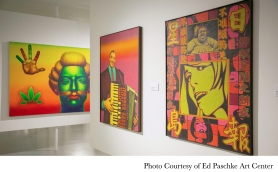 The last stop of the day will be the Ed Paschke Art Center (5415 W. Higgins Road, Chicago). I mentioned the Art Center in my 25 Ideas for Fall Fun. We never made it in the fall. So, the hope is we make it this summer.
The last stop of the day will be the Ed Paschke Art Center (5415 W. Higgins Road, Chicago). I mentioned the Art Center in my 25 Ideas for Fall Fun. We never made it in the fall. So, the hope is we make it this summer.
“The Ed Paschke Art Center commemorates the life and work of Ed Paschke, one of Chicago’s most famous artists. It also recognizes his contributions to the artistic life of the city as a cultural ambassador, teacher, family man, and friend. Ed Paschke made art about the famous and the infamous. Bold, sometimes shocking, he permitted his subjects to express their complex personalities. Paschke was a strong believer in the viewer’s capacity to interpret his works of art on their own terms.” – Ed Paschke Art Center website
The Art Center is free and open to the public (donations are always welcome).
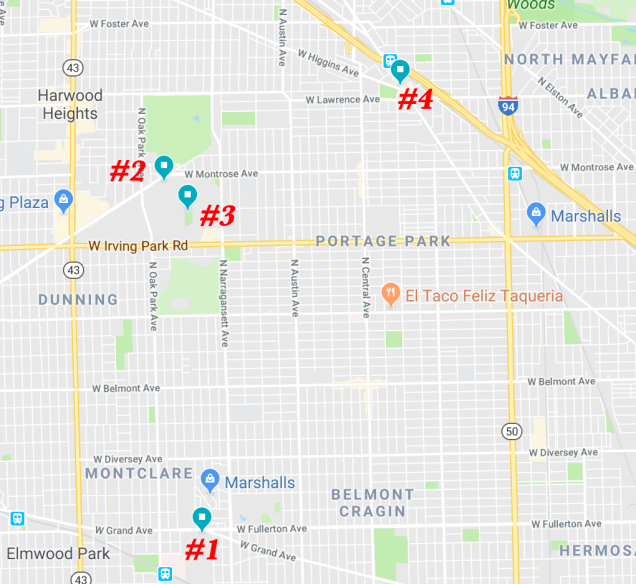
Outing #8 – Evanston, Illinois
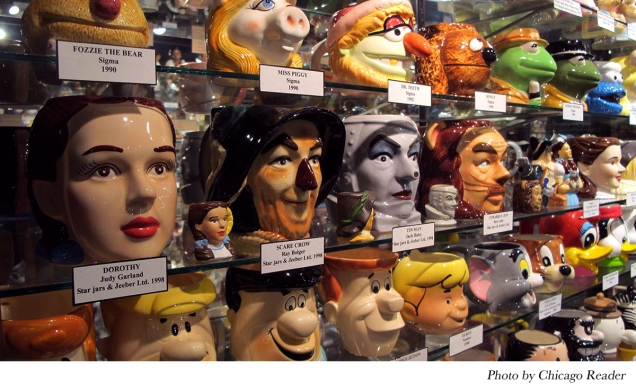
When I read that Evanston was home to the American Toby Jug Museum (910 Chicago Ave, Evanston), I knew we had to go. I had no idea what made a mug a Toby Jug, but after perusing the website, it was very clear that these were some special pieces of drinkware. The museum house 8000 Toby and character jugs in 97 cabinets and it is the largest collection of its kind in the world. The museum admission is FREE. Make sure the kids have all their wiggles out before entering the museum. There is no room for even the smallest accident.
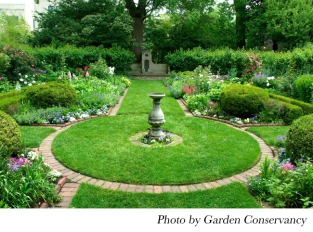 Before heading to the American Toby Jug Museum we will pay a visit to the campus of Northwestern University. We’ll take a short stroll through the Shakespeare Garden (2133 Sheridan Road).
Before heading to the American Toby Jug Museum we will pay a visit to the campus of Northwestern University. We’ll take a short stroll through the Shakespeare Garden (2133 Sheridan Road).
“The Garden Club of Evanston conceived the idea of designing and implementing a Shakespeare Garden on Northwestern University property in 1916 and secured the renowned Landscape Architect Jens Jensen to design the garden. In 1988, the garden was listed on the U.S. National Register of Historic Places.” – Northwestern University
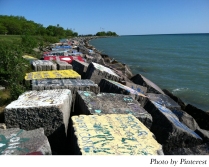 We’ll then head over to the painted rocks along the lakefront, on the Northwestern University campus. Many messages have been written on the rocks, everything from marriage proposals to congratulatory messages. There is long standing tradition at the University, to write messages of various topics along the rocks.
We’ll then head over to the painted rocks along the lakefront, on the Northwestern University campus. Many messages have been written on the rocks, everything from marriage proposals to congratulatory messages. There is long standing tradition at the University, to write messages of various topics along the rocks.
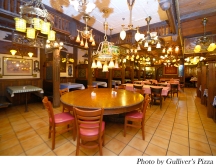 So, after goggling at all those jugs, I’m sure we will have worked up an appetite. So we’ll head to Gulliver’s Pizza & Pub (2727 W. Howard Street, Chicago). Home to the world famous pizza in a pan, Gulliver’s offers a unique dining experience you can only find in Chicago.
So, after goggling at all those jugs, I’m sure we will have worked up an appetite. So we’ll head to Gulliver’s Pizza & Pub (2727 W. Howard Street, Chicago). Home to the world famous pizza in a pan, Gulliver’s offers a unique dining experience you can only find in Chicago.
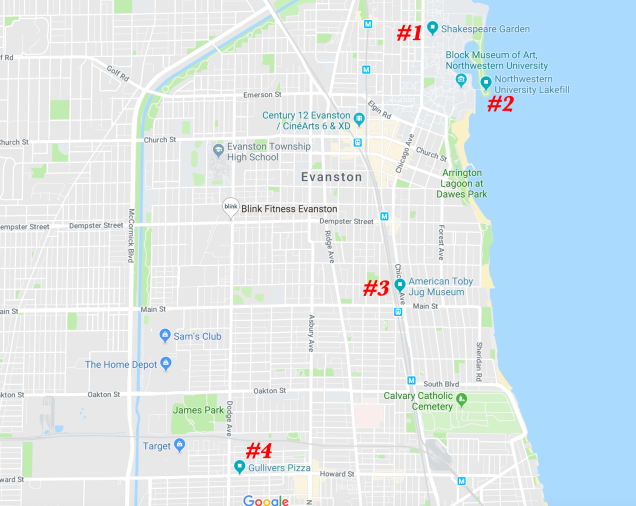
Outing #9 – Forest Park, Illinois
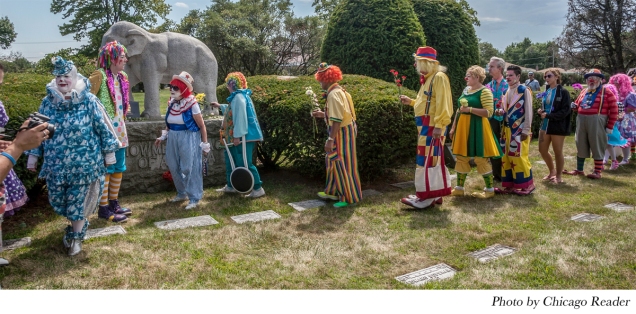
So, there’s a few things you need to know about me. Clowns creep me out a little and the idea of animals performing in circuses disturbs me a bit. However, when I read about the Showmen’s Rest at Woodlawn Cemetery (7600 W. Cermak Road, Forest Park), I knew I had to visit the memorial.
“On the fateful early morning of June 22, 1918, a 26-car circus train was heading from Illinois into Hammond, Indiana, with 400 performers and roustabouts asleep in the rear cars. The train was halted on the Michigan Central tracks near Ivanhoe due to an overheated axle box. A troop train suddenly appeared on the same track, cruising up from behind at 35mph and failing to heed track warning signals and flares. Engineer Alonzo Sargent snoozed his way through three cars, finally halting on top of the fourth in a deafening grinding of metal and splintering of wood. Most of the 86 perished in the first 35 seconds of the wreck. Then, as is typical of any horrific historical mishap, the whole thing caught on fire. Four days after the crash, survivors gathered at Woodlawn Cemetery, where the Showmen’s League of America had selected a burial plot for members. The identity of many victims of the wreck was unknown — some were roustabouts and temporary workers hired just hours or days before. Most of the markers note “unidentified male” or female. One is marked “Smiley,” another “Baldy,” and “4 Horse Driver.” Showmen’s Rest continues to fill up today, with deceased showmen performing at that biggest of Big Tops.” – Roadside America
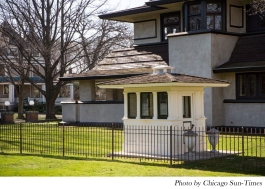 It’s then on to Oak Park (313 Forest Ave, Oak Park) to see an authentic ticket booth from the 1893 World’s Columbian Exposition. Purchased shortly after the fair was over, it was used as a playhouse for children. Thankfully, this piece of Chicago history has been restored to its former glory and resides in the yard of the Hills-DeCaro House, designed by Frank Lloyd Wright.
It’s then on to Oak Park (313 Forest Ave, Oak Park) to see an authentic ticket booth from the 1893 World’s Columbian Exposition. Purchased shortly after the fair was over, it was used as a playhouse for children. Thankfully, this piece of Chicago history has been restored to its former glory and resides in the yard of the Hills-DeCaro House, designed by Frank Lloyd Wright.
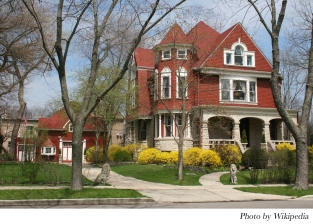 We then move into Chicago to check out another impressive house. The Beeson House and Coach House (5801 W. Midway Park, Chicago) is an example of the Queen Anne style of architecture. Even if you are unfamiliar or have no interest in various styles of architecture, just seeing this home will cause your eyes to widen and maybe even a jaw to drop.
We then move into Chicago to check out another impressive house. The Beeson House and Coach House (5801 W. Midway Park, Chicago) is an example of the Queen Anne style of architecture. Even if you are unfamiliar or have no interest in various styles of architecture, just seeing this home will cause your eyes to widen and maybe even a jaw to drop.
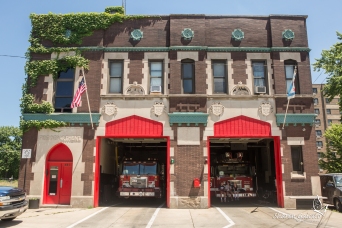
The kids will not even realize, but we will only be a block away from their Dad’s firehouse (Engine 96, Truck 29, 439 N. Waller, Chicago). So, of course, we will stop and say hi. Hopefully, the goats are out next door!
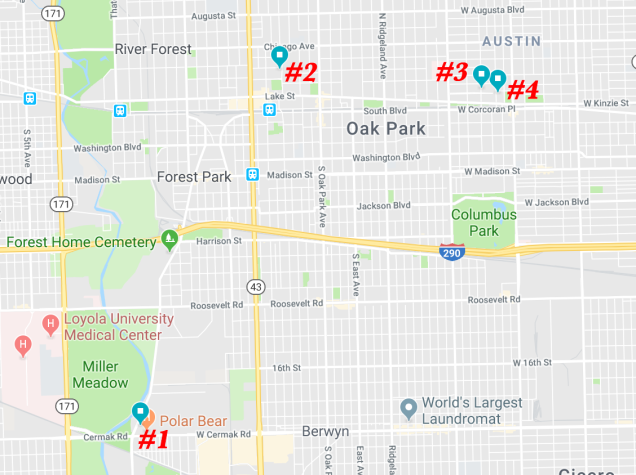
Outing #10 – Humboldt Park, Chicago
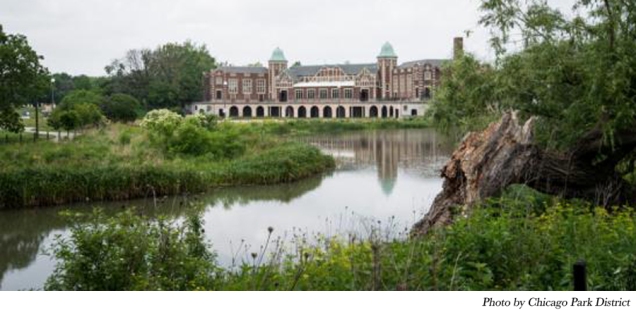
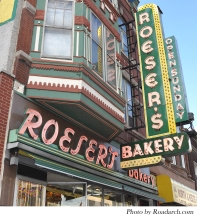 We wanted to visit Humboldt Park last summer and it never happened. So, hoping we can find time to visit this summer. The plan is to get an early start and what better way to motivate a bunch of sleepy kids, then with donuts. Our first stop is at Roeser’s Bakery (3216 W. North Ave, Chicago). It is the oldest family-owned bakery in the Chicagoland area (100+ years). Custom cakes, cookies and tortes can be found on the menu. We’re hoping to have some delicious donuts.
We wanted to visit Humboldt Park last summer and it never happened. So, hoping we can find time to visit this summer. The plan is to get an early start and what better way to motivate a bunch of sleepy kids, then with donuts. Our first stop is at Roeser’s Bakery (3216 W. North Ave, Chicago). It is the oldest family-owned bakery in the Chicagoland area (100+ years). Custom cakes, cookies and tortes can be found on the menu. We’re hoping to have some delicious donuts.
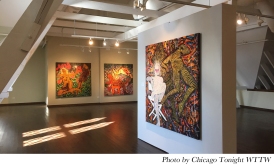 After our morning treat, we’ll walk over to the Humboldt Park Bird and Butterfly Sanctuary, located in Humboldt Park. I might get a few complaints about this, but if the kids want to go on the swan boats, then the complaints will be at a minimum. Our walk through the sanctuary will take us to the National Museum of Puerto Rican Arts and Culture (3015 W. Division Street, Chicago). The museum is free and open Tuesdays thru Saturdays.
After our morning treat, we’ll walk over to the Humboldt Park Bird and Butterfly Sanctuary, located in Humboldt Park. I might get a few complaints about this, but if the kids want to go on the swan boats, then the complaints will be at a minimum. Our walk through the sanctuary will take us to the National Museum of Puerto Rican Arts and Culture (3015 W. Division Street, Chicago). The museum is free and open Tuesdays thru Saturdays.
“Located in Humboldt Park, in the heart of Chicago’s Puerto Rican community, the National Museum of Puerto Rican Arts & Culture (NMPRAC) is the only self-standing museum in the nation devoted to showcasing Puerto Rican arts and cultural exhibitions year-round.” – NMPRAC website
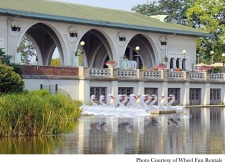 Finally, we’ll get some exercise by peddling large swan boats in the Humboldt Park Lagoon. When I say we, that includes the kids. I do not plan on doing all the peddling. Currently, the website lists the swan boats as being unavailable. Not sure if all the rain we’ve been getting is a factor, but I will keep you posted.
Finally, we’ll get some exercise by peddling large swan boats in the Humboldt Park Lagoon. When I say we, that includes the kids. I do not plan on doing all the peddling. Currently, the website lists the swan boats as being unavailable. Not sure if all the rain we’ve been getting is a factor, but I will keep you posted.
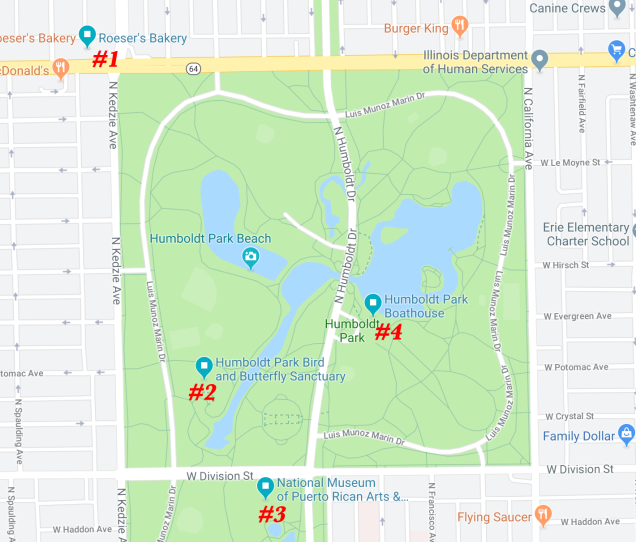
Outing #11 – Hyde Park, Chicago

Riley was excepted into a summer program at the University of Chicago. Pretty exciting! It will be one week and she’ll be learning how DNA sequencing works, current DNA technologies, basic programming skills, and ethics in genome sciences. It should be an interesting experience. So, I thought while Riley is hanging out with scientist, the rest of us could check out the campus.
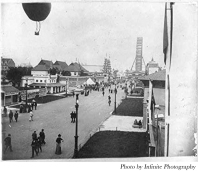 We’ll first take a drive down Midway Plaisance. The Midway Plaisance offered amusements ranging from a replica “Street in Cairo” to carnival rides, during the Columbian Exposition (World’s Fair) of 1893. The world’s first Ferris Wheel, invented by George W. Ferris, was a popular Midway attraction. The 250-foot high steel structure appears in the distance in this picture.
We’ll first take a drive down Midway Plaisance. The Midway Plaisance offered amusements ranging from a replica “Street in Cairo” to carnival rides, during the Columbian Exposition (World’s Fair) of 1893. The world’s first Ferris Wheel, invented by George W. Ferris, was a popular Midway attraction. The 250-foot high steel structure appears in the distance in this picture.
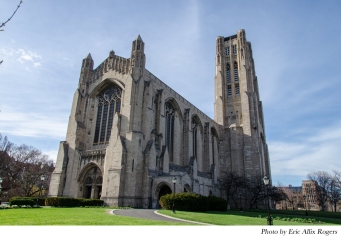 As we are driving down Midway Plaisance, we will have a good view of the Rockefeller Chapel. We will get an even closer look, once we turn down Woodlawn Ave. (5850 S. Woodlawn Ave.).
As we are driving down Midway Plaisance, we will have a good view of the Rockefeller Chapel. We will get an even closer look, once we turn down Woodlawn Ave. (5850 S. Woodlawn Ave.).
“Rockefeller Chapel is the spiritual and ceremonial center of the University of Chicago, and a major civic presenter of the performing arts. A leading venue for pipes, bells, and voices, it is a prized event location for major speakers and international artists. It is the home of two world class instruments, the E.M. Skinner Organ and the Laura Spelman Rockefeller Memorial Carillon, and a storied choral program. Resembling a medieval cathedral in appearance and size, it hosts festivals and ceremonies of many world religious traditions.” – University of Chicago
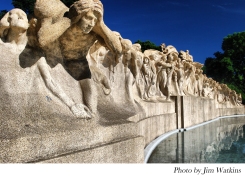 We will then continue going west on Miday Plaisance, until we reach the Fountain of Time.
We will then continue going west on Miday Plaisance, until we reach the Fountain of Time.
‘Dedicated in 1922, the expansive Washington Park installation depicts 100 human figures from across the age spectrum: infants to crones, soldiers to schoolchildren. The figures seem to rush across an arch towards some uncertain future, all watched over by the imposing figure of Father Time, who is hooded and carries a scythe. The figures are intentionally generic, although the sculptor—Lorado Taft—did include himself and one of his assistants on the western side of the piece. It serves as not only as a stark rendering of mortality, but also as a memorial to the first 100 years of peace between the United States and Great Britain following the War of 1812.” – Atlas Obscura
We will then travel north and visit the Smart Museum of Art (5550 S. Greenwood Ave). The museum is open to the public, is free and is home to many unique pieces of art. The exhibitions are innovative and the collections are one of kind.
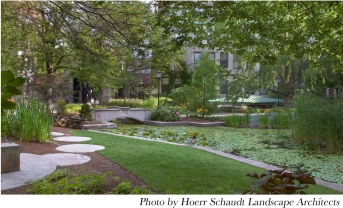 Our last stop will be at the Botany Pond (just south of 57th Street and in between Ellis Ave and Woodlawn Ave)
Our last stop will be at the Botany Pond (just south of 57th Street and in between Ellis Ave and Woodlawn Ave)
“Long a favorite spot in the Main Quadrangle for its pond and bridge, the landscape around Botany Pond fell to neglect until the University began its Botanic Garden campus initiative. Hoerr Schaudt designed a comprehensive renovation to restore this historic site to a condition of lushness with a high diversity of plant materials. In addition to creating an exuberant botanic display, the project preserved and improved water quality. Today, students, faculty, and a resident family of ducks enjoy the seasonal changes designed into the garden.” – Hoerr Schaudt website
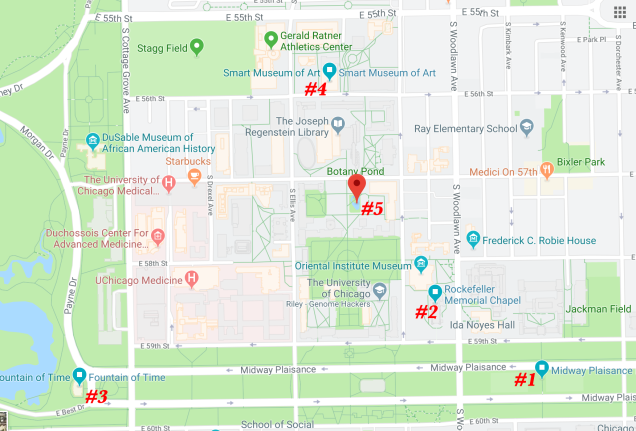
Outing #12 – Justice, Illinois
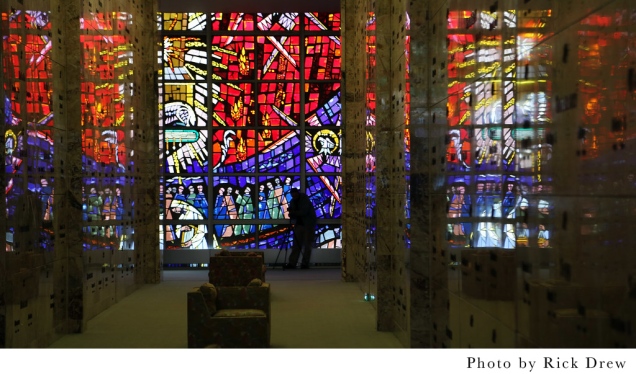
Guinness Book of World Records gave the award of world’s largest stained glass to a cemetery in Justice, IL. There may be a window in Kansas that is now larger, but that does not take away from the magnificence of this amazing work of art. Located at Resurrection Cemetery (7201 Archer Road) in Justice, it was created by Pickel Studios, using over 22,000 square feet of faceted glass. It contains 2,448 panels. We will definitely be visiting on a sunny day.
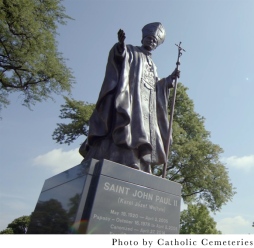 While we are at Resurrection Cemetery, we will check out the 20 foot tall Pope John Paul II statue.
While we are at Resurrection Cemetery, we will check out the 20 foot tall Pope John Paul II statue.
“In 1969 and again in 1976, before he became Pope John Paul II, Karol Cardinal Wojtyla the Archbishop of Kracow, walked the grounds of Resurrection Cemetery in Justice, Illinois. In 1969, the Cardinal visited Resurrection Cemetery to see and bless the Polish Millennium Shrine honoring the 1000th anniversary (966 – 1966) of Christianity in Poland. How can one honor a man of Polish heritage, who was of great faith, and who served his God and the church as its pontiff from 1978 until in death in 2005; and who once walked the very grounds of Resurrection Cemetery you may ask? What better way than with a heroic size statue!” – Catholic Cemeteries
While in Resurrection Cemetery, I just might have to share the story of Resurrection Mary, to the kids. We’ll have to see if I’m in the mood for terrifying children that day.
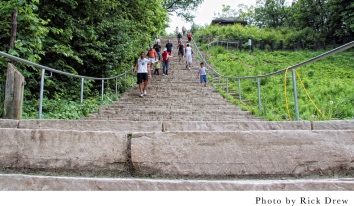 Once we leave the cemetery, we will travel 15 minutes south and visit the Swallow Cliffs in Palos Park (along the Sag Valley Trail). We will climb a 100 foot staircase made of 125 limestone stairs. At the top, we will take in some amazing views and maybe even jump on a trial for a short stroll. Something tells me that after climbing those stairs, the enthusiasm for a walk will be lacking. This will be good practice for our Yellowstone trip later this summer.
Once we leave the cemetery, we will travel 15 minutes south and visit the Swallow Cliffs in Palos Park (along the Sag Valley Trail). We will climb a 100 foot staircase made of 125 limestone stairs. At the top, we will take in some amazing views and maybe even jump on a trial for a short stroll. Something tells me that after climbing those stairs, the enthusiasm for a walk will be lacking. This will be good practice for our Yellowstone trip later this summer.
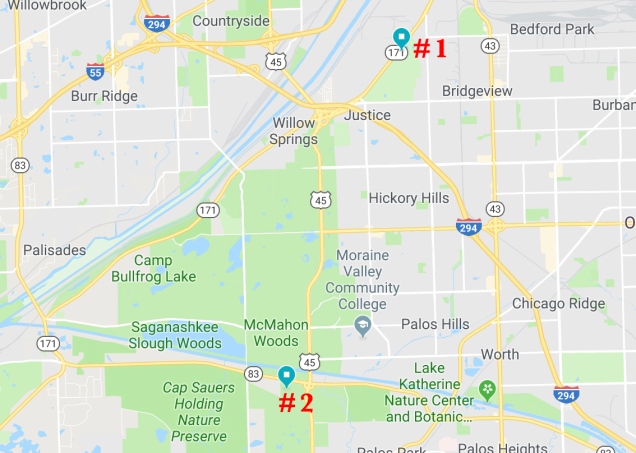
Outing #13 – Lakeview, Chicago
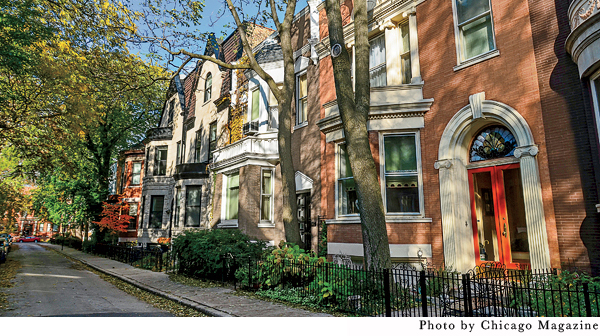
This outing is nice and close. Lakeview is our neighbor to the east. You can be sure we will be going on this outing while the Cubs are out of town. Our first stop will be at the Lakeview Post Office (1343 W. Iriving Park Road). We’re not dropping off any packages or sending out any letters, but we are going to check out a mural created by Harry Sternberg in 1937. Titled, “Chicago: Epoch of a Great City” it has many individual elements that show a clear timeline of Chicago’s history.
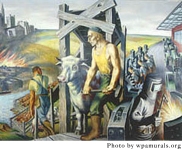 “During the Great Depression, the Works Progress Administration was the greatest and most ambitious agency to come out of FDR’s New Deal that employed mostly the unskilled. One sector of the Works Progress Administration (WPA) was the Federal Art Project (FAP), and from that was born the Mural Division. This sought to not only employ artists that were struggling financially, but also to bring art to the public. There were many divisions of the FAP that had similar goals, but the Mural Division had a grand vision, and a lasting legacy. It showcased the talent of many artists in that era with varying artistic styles, visions, and messages. One of those artists was Harry Sternberg.” – The Living New Deal
“During the Great Depression, the Works Progress Administration was the greatest and most ambitious agency to come out of FDR’s New Deal that employed mostly the unskilled. One sector of the Works Progress Administration (WPA) was the Federal Art Project (FAP), and from that was born the Mural Division. This sought to not only employ artists that were struggling financially, but also to bring art to the public. There were many divisions of the FAP that had similar goals, but the Mural Division had a grand vision, and a lasting legacy. It showcased the talent of many artists in that era with varying artistic styles, visions, and messages. One of those artists was Harry Sternberg.” – The Living New Deal
Sternberg’s mural proves to be a lasting legacy of the Great Depression, as it remains one of the better restored murals that survived the Federal Arts Project.
Our next stop will be to Alta Vista Terrace Historic District (3800 N. Alta Vista Terrace). Pictured above, this is a little piece of Chicago history, I didn’t know existed.
“Alta Vista Terrace was one of Samuel Eberly Gross‘s last real estate developments. Inspired by a visit to Europe, Gross and architect Joseph C. Brompton, re-created the character of London row houses on Alta Vista Terrace. The street wall is designed as one unit but with an array of contrasts in color, rooflines, and style. There are twenty row houses on each side of the street. whose designs are mirrored diagonally across the block. All the row houses are two-story building of Roman brick except the four three-story graystones in the center. In 1971 Alta Vista Terrace was designated Chicago’s first historic district.” – Choose Chicago
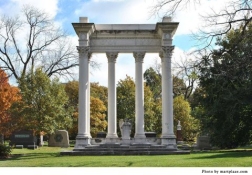 Just up the street from Alta Vista Terrace is Graceland Cemetery. Yes, another cemetery. However, not just any cemetery. As mentioned in last summer’s list, and a place we never got to visit, Graceland Cemetery is the final resting place of many prominent Chicagoans. It has 150 years of history and is still an active cemetery and arboretum.
Just up the street from Alta Vista Terrace is Graceland Cemetery. Yes, another cemetery. However, not just any cemetery. As mentioned in last summer’s list, and a place we never got to visit, Graceland Cemetery is the final resting place of many prominent Chicagoans. It has 150 years of history and is still an active cemetery and arboretum.
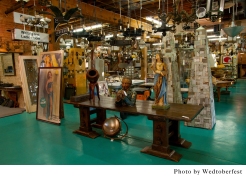 Our last stop will be a little further north, to Architectural Artifacts (4325 N. Ravenswood Ave). The kids enjoy going thrifting, but they will be blown away by the items that can be found at this store. There’s no doubt that there will be no purchases made, with the few dollars brought along on the trip, but we will have fun walking around and imagining the stories behind the various unique items found on multiple floors.
Our last stop will be a little further north, to Architectural Artifacts (4325 N. Ravenswood Ave). The kids enjoy going thrifting, but they will be blown away by the items that can be found at this store. There’s no doubt that there will be no purchases made, with the few dollars brought along on the trip, but we will have fun walking around and imagining the stories behind the various unique items found on multiple floors.
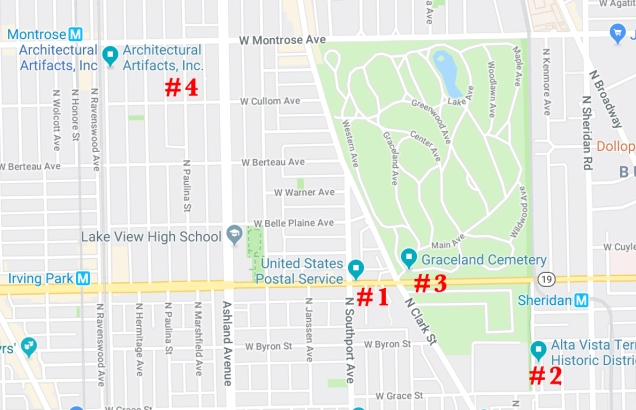
Outing #14 – Logan Square, Chicago
 I love murals! I have taken the kids all over the city to check out some really cool murals. I have been wanting to see the Robin Williams mural ever since it was created last year. Located on the north side of the Concordia Music Hall (2047 N. Milwaukee Ave) it is truly a magical piece of art.
I love murals! I have taken the kids all over the city to check out some really cool murals. I have been wanting to see the Robin Williams mural ever since it was created last year. Located on the north side of the Concordia Music Hall (2047 N. Milwaukee Ave) it is truly a magical piece of art.
The rest of our day will be cruising around Logan Square, Wicker Park and Bucktown to enjoy murals of all sizes, shapes and color. We will definitely be stopping by the Vivian Maier mural (1651 W. North Ave).
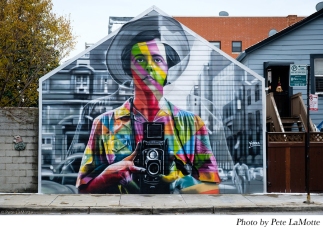 “She was born in New York in 1926 and spent her youth both there and in France (her mother was French). She began taking photos with an old box camera, but in 1952 – possibly inspired by a show of contemporary French photography at the Museum of Modern Art – she acquired a Rolleiflex, the camera used by many renowned street photographers. Wearing it around her neck, she traversed the city, snapping portraits of everyday people and children and often stopping in front of a reflective surface to capture an image of herself – she was skilled in the art of taking a selfie long before it was fashionable.” – WTTW
“She was born in New York in 1926 and spent her youth both there and in France (her mother was French). She began taking photos with an old box camera, but in 1952 – possibly inspired by a show of contemporary French photography at the Museum of Modern Art – she acquired a Rolleiflex, the camera used by many renowned street photographers. Wearing it around her neck, she traversed the city, snapping portraits of everyday people and children and often stopping in front of a reflective surface to capture an image of herself – she was skilled in the art of taking a selfie long before it was fashionable.” – WTTW
She never shared her work and it would have been lost forever, if it wasn’t for a real estate agent that bought some of her negatives after her death and soon realized she was a brilliant photographer.
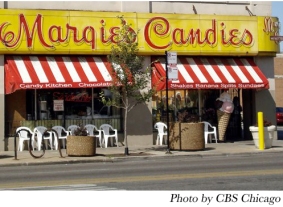 We will using the list of murals found on the online registry and archive of murals and public work throughout Wicker Park and Bucktown. As we walk the streets and admire the work of many creative artists, we will most definitely make a stop at the Original Margie’s Candies (1960 N. Western Ave). For almost a century (established in 1921), Margie’s has been delighting young and old with their homemade sundaes, shakes and hand-dipped candies. We have visited the Margie’s on Montrose, but this will be our first visit to the place where it all started.
We will using the list of murals found on the online registry and archive of murals and public work throughout Wicker Park and Bucktown. As we walk the streets and admire the work of many creative artists, we will most definitely make a stop at the Original Margie’s Candies (1960 N. Western Ave). For almost a century (established in 1921), Margie’s has been delighting young and old with their homemade sundaes, shakes and hand-dipped candies. We have visited the Margie’s on Montrose, but this will be our first visit to the place where it all started.
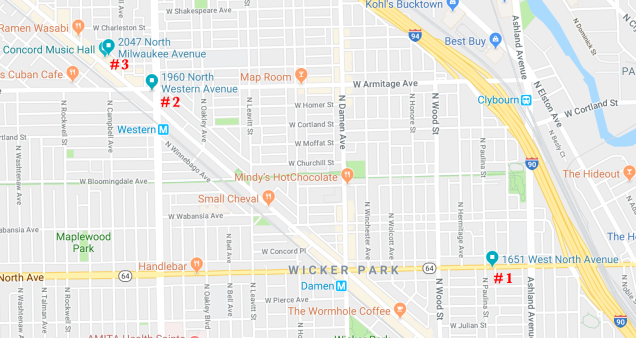
Outing #15 – North Center, Chicago
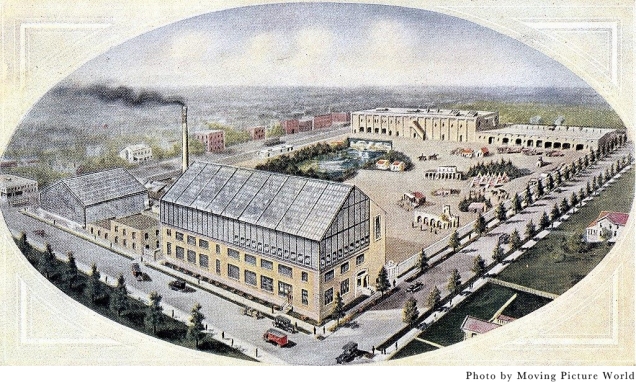
I have lived in the North Center neighborhood for 20 years and I never knew a film company used to exist, just blocks aways from our home. It was created in 1896 by William Selig. The Selig Polyscope Company was one of two local producers of some of the earliest motion pictures.
“Selig was a native Chicagoan, but traveled the country as a magician and fake “medium” in tent shows and minstrel troupes, calling himself a “Colonel” along the way. He was on the road when he first encountered the Edison Kinetoscope, sparking his ambition to make movies. When Edison’s patents got in the way, he “borrowed” some technology from the competing Lumiere Brothers. In 1909, when the lawyers came knocking, he opened up shop in a little backwater out west called Los Angeles, creating the first Hollywood movie studio.” – Atlas Obscura
The studio took up an entire city block. Today the largest structure from the studio company stills stands, located at 3900 N. Claremont. The Selig trademark, “S” in a diamond can be seen above the front door.
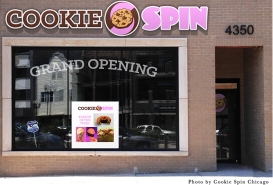 We’ll then travel north on Leavitt and grab a treat at Cookie Spin (4350 N. Leavitt Street). The kids have had the opportunity to check out this establishment, but I have not. I do love cookies, so I’m sure I’ll find something I like.
We’ll then travel north on Leavitt and grab a treat at Cookie Spin (4350 N. Leavitt Street). The kids have had the opportunity to check out this establishment, but I have not. I do love cookies, so I’m sure I’ll find something I like.
“After two years of specializing in event catering, Cookie Spin is the retail bakery shop presented by Innovative Indulgences. In addition to the famous “Deep Dish Cookies,” Cookie Spin will also serve ice cream, cookie milkshakes, extravagant sundaes, smoothies, coffee, and even more delicious pastry items!” – Cookie Spin Chicago
We will continue our walk, going north on Lincoln Ave, toward the Lincoln Square neighborhood. Supposedly, at 4613 N. Lincoln Ave. is a plaque that commemorates nothing. After going on many outings and reading many plaques, it will be interesting to see what the reaction will be after reading this plaque.
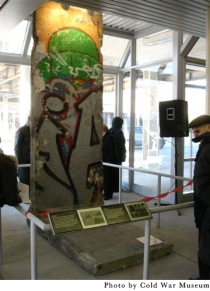 Our last stop will be at the Western Brown Line Station (4648 N. Western Ave). Once again, a piece of history in our own backyard that I had no idea about. I can’t even tell you how many times I have driven past this station and didn’t known that a piece of the Berlin Wall was inside.
Our last stop will be at the Western Brown Line Station (4648 N. Western Ave). Once again, a piece of history in our own backyard that I had no idea about. I can’t even tell you how many times I have driven past this station and didn’t known that a piece of the Berlin Wall was inside.
“Segments of the Berlin Wall have been given to various institutions since its fall on November 9, 1989. When Chicago was offered a piece of the Berlin Wall in 2008, Lincoln Square was the natural choice for a location, considering its German roots.” – Lincoln Square Ravenswood Chamber of Commerce
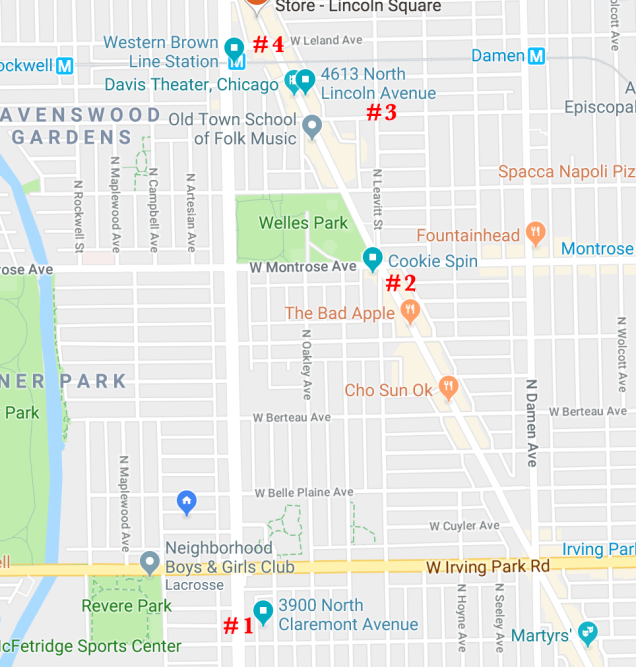
Outing #16 – Prairie District, Chicago
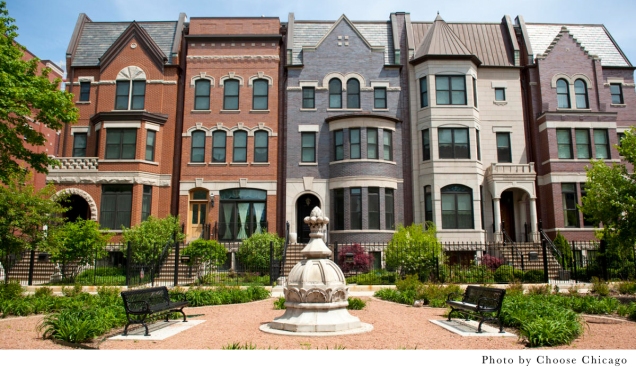
The Prairie District located on the near south side was the original Gold Coast. In the last three decades of the 19th century the most wealthiest Chicagoans lived in this area, 75 millionaires to be exact. Some of the homes remain as a result of concerned citizens.
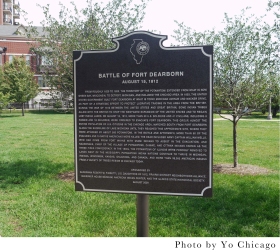 Our first stop will be to the Battle of Fort Dearborn Park (1801 S. Calumet Ave). Very close to the where the park is located is where the Battle of Fort Dearborn took place.
Our first stop will be to the Battle of Fort Dearborn Park (1801 S. Calumet Ave). Very close to the where the park is located is where the Battle of Fort Dearborn took place.
“During the War of 1812, some Native Americans in this area were allied with the British. After the British captured the American garrison at Mackinac, General William Hull ordered the evacuation of Fort Dearborn, which was located at the juncture between Lake Michigan and the Chicago River. As approximately 500 Potawatomi gathered at the fort, its commander, Captain Nathan Heald prepared to abandon his post. On August 15, 1812, a procession of soldiers and settlers including women and children left the fort, and began an attempt to walk to Fort Wayne. After walking a mile-and-a-half south of the fort, the Native Americans attacked the group. More than 50 soldiers and settlers were brutally killed and the others were taken as prisoners to sell to the British. (Some were saved by friendly Potawatomi, such as Black Partridge). A number of the victims died after they were taken prisoner and others were released. The Native Americans burned Fort Dearborn down, and it remained unoccupied until it was rebuilt by the US military in 1816. Over the next couple of decades, the US government began forcibly removing Native Americans from the region and relocating them to areas west of the Mississippi River. Also known as the Fort Dearborn Massacre, the Battle of Fort Dearborn has been depicted in some early works of public art including a bas relief sculpture on the Michigan Avenue Bridge.” – Chicago Park District
Our second stop is the 1800 and 1900 blocks of South Prairie Ave. It is here where we will find the remaining homes of once was the premier residential district. In the 1880s and 1890s, Prairie Avenue was home to some of the city’s founding families like the Pullmans, Armours, and Marshall Field.
We will then check out the Glessner House (1800 S. Prairie Ave).
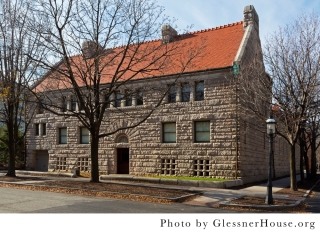 “In 1885, John and Frances Glessner – both civic leaders in Chicago and an influential family during the Gilded Age – purchased a spacious corner lot on the most exclusive street at the time, Prairie Avenue. Following the Great Chicago Fire of 1871, this area just south of downtown had become the city’s most fashionable neighborhood. When Philip Armour joined Marshall Field and George Pullman on the street in 1877, Chicago’s three wealthiest citizens were living within a four-block stretch of Prairie Avenue. With the city’s elite living here on “Millionaire’s Row” in elaborate, modern-day castles, it was the “sunny street that held the sifted few.” The Glessner’s hired noted Boston architect H. H. Richardson to design a simple, comfortable home that retained the “cozy” feeling of their previous home on West Washington Street.When the house at 1800 S. Prairie was completed, it stood out among the other homes, whose designs were patterned after older European styles. The home was a perfect expression of both the Glessners and the Richardson aesthetic.” – Choose Chicago
“In 1885, John and Frances Glessner – both civic leaders in Chicago and an influential family during the Gilded Age – purchased a spacious corner lot on the most exclusive street at the time, Prairie Avenue. Following the Great Chicago Fire of 1871, this area just south of downtown had become the city’s most fashionable neighborhood. When Philip Armour joined Marshall Field and George Pullman on the street in 1877, Chicago’s three wealthiest citizens were living within a four-block stretch of Prairie Avenue. With the city’s elite living here on “Millionaire’s Row” in elaborate, modern-day castles, it was the “sunny street that held the sifted few.” The Glessner’s hired noted Boston architect H. H. Richardson to design a simple, comfortable home that retained the “cozy” feeling of their previous home on West Washington Street.When the house at 1800 S. Prairie was completed, it stood out among the other homes, whose designs were patterned after older European styles. The home was a perfect expression of both the Glessners and the Richardson aesthetic.” – Choose Chicago
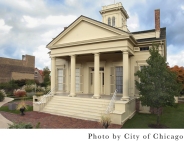 Not too far from the Glessner House is the Clark House Museum (1827 S. Indiana Ave).
Not too far from the Glessner House is the Clark House Museum (1827 S. Indiana Ave).
“Clarke House Museum is the oldest surviving building in the original Chicago city limits and its only example of Greek Revival domestic architecture. Built in 1836 for hardware merchant Henry Brown Clarke and remodeled for his widow in the early 1850s, Clarke House Museum explores family life in pre-Civil War Chicago.” – Chicago House Museums
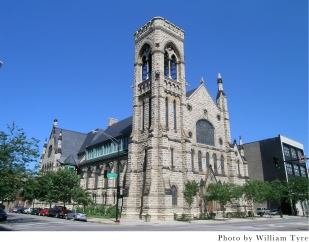 Our last stop will be to the Second Presbyterian Church (1936 S. Michigan Ave).
Our last stop will be to the Second Presbyterian Church (1936 S. Michigan Ave).
“Second Presbyterian Church is one of the oldest congregations in the city of Chicago and has played a prominent role in the history of the city from its inception. Located in a landmark building known for its stained glass windows and Arts and Crafts interior, the church has seen dramatic changes in its congregation and surrounding neighborhoods over the past 173 years. The congregation was organized on June 1, 1842, just five years after the incorporation of the city of Chicago. Dr. Rev. Robert W. Patterson was ordained and installed as the first minister. To give some idea of the prominence of the church at this time, it is interesting to note that when President Grove Cleveland came to Chicago to open the Chicago World’s Columbian Exposition in 1893, he worshipped at Second Presbyterian. The following year, the second of the Tiffany windows, Angel in the Lilies, based on a window displayed at the fair, was installed in the church. National Historic Landmark status was conferred upon the church by the U.S. Department of the Interior and the National Park Service on February 27, 2013. It is the only church in the city of Chicago and one of only three in the state of Illinois to be so designated. – Second Presbyterian Church
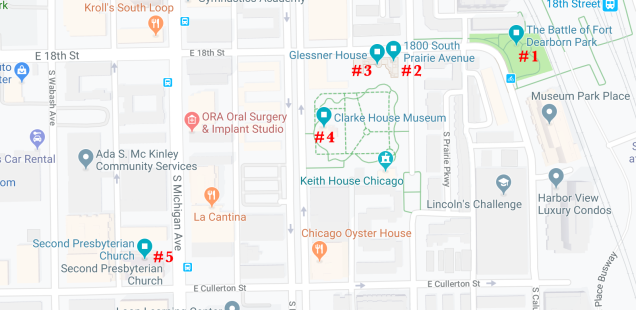
Outing #17 – Rockford, Illinois

I am a big fan of Japanese gardens. I always make sure to stop by the Japanese garden at the Chicago Botanic Garden. One of my favorite spots in Jackson Park is the Garden of the Phoenix. So, I knew I needed to get out to Rockford and visit the Anderson Japanese Gardens (318 Spring Creek Road, Rockford).
“Construction of Anderson Japanese Gardens began in 1978, when Rockford businessman John Anderson was inspired by a visit to the Portland Japanese Garden in Oregon. With the ongoing assistance of renowned Master Craftsman and designer Hoichi Kurisu, the Andersons’ swampy backyard along Rockford’s Spring Creek was transformed into a Japanese-style landscape. From groundbreaking to today, the placement of every rock, alignment of every tree, and layout of all paths has been made with careful consideration by Mr. Kurisu. In 1998, John and Linda Anderson donated the Gardens as a supported organization to the Rockford Rotary Charitable Association. It now exists as a not-for-profit entity and continues to grow and change to this day.” – Anderson Japanese Gardens
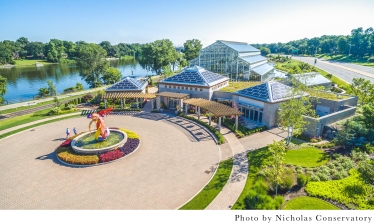 Just a four minute car ride from the Anderson Japanese Gardens is the Nicholas Conservatory and Gardens (1354 N 2nd Street, Rockford).
Just a four minute car ride from the Anderson Japanese Gardens is the Nicholas Conservatory and Gardens (1354 N 2nd Street, Rockford).
“Situated along the banks of our beautiful Rock River, Nicholas Conservatory & Gardens brings the tropics to the Midwest. The facility is the third largest conservatory in Illinois, offering an 11,000-square-foot plant exhibition area complete with water features, seating areas, and sculptures, all in a tropical plant setting.nThe beauty continues outdoors with the Eclipse Lagoon, complete with two fountains and a waterfall, pedestrian bridge, patio areas, and walkway connecting the Conservatory to the Sinnissippi Rose Garden.” – Nicholas Conservatory and Gardens
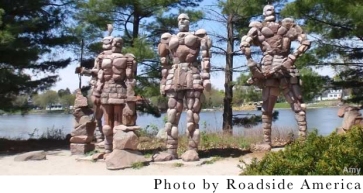 A seven minute walk from the Conservatory are the Rockmen Guardians (Rock River Rec Bike Path, Rockford).
A seven minute walk from the Conservatory are the Rockmen Guardians (Rock River Rec Bike Path, Rockford).
“Created by Milwaukee artist Terese Agnew in 1987, the four stone figures cut proud silhouettes in their secluded spot in the park. The 12-foot tall guardians are made up completely of boulders, each weighing hundreds of pounds, and held together with cement. They each hold a different super heroic pose with the obvious leader holding his hand on a rocky sword, ready for battle.” – Atlas Obscura
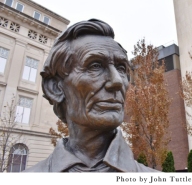 Moving to the other side of the Rock River, we will head to the corner of South Church Street and Elm Street. There we will find a large bust of our 16th president, good old Abe. The bust commemorates the time when Abraham Lincoln came to Rockford in July of 1855 to prepare for what has come to be called the Great Reaper Trial — perhaps the most significant commercial lawsuit in the city’s history. The bust is five feet tall. We will be sure to rub his nose for luck.
Moving to the other side of the Rock River, we will head to the corner of South Church Street and Elm Street. There we will find a large bust of our 16th president, good old Abe. The bust commemorates the time when Abraham Lincoln came to Rockford in July of 1855 to prepare for what has come to be called the Great Reaper Trial — perhaps the most significant commercial lawsuit in the city’s history. The bust is five feet tall. We will be sure to rub his nose for luck.
The last stop takes us by the former site of the Nelson Knitting Company (909 S. Main Street, Rockford), home of the Sock Monkey.
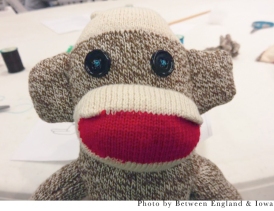 “The old-fashioned, handcrafted sock monkey dolls made with Original Rockford Red Heel® socks
“The old-fashioned, handcrafted sock monkey dolls made with Original Rockford Red Heel® socks from Fox River Mills have become a favorite piece of “Americana” over the years. Intended and worn even today as work socks, mothers in the early 1900’s fashioned these Rockford socks into sock monkeys for their children. Clever crafters have been making Sock Monkeys
and other animal sock dolls ever since. In 1890, Nelson Knitting began manufacturing these Red Heeled socks. Fox River Mills purchased Nelson Knitting in 1992. Today, the instructions for making these dolls are still included in each package of authentic Red Heel Monkey socks. Crafters have been lovingly making Sock Monkeys for generations.” – SockMonkey.com
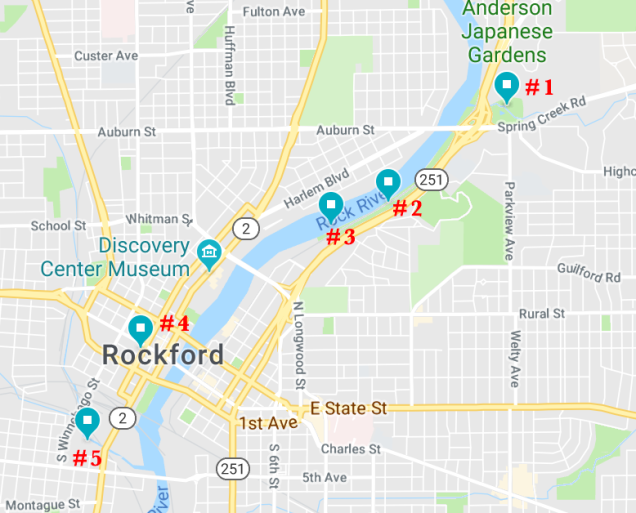
Outing #18 – South Loop, Chicago
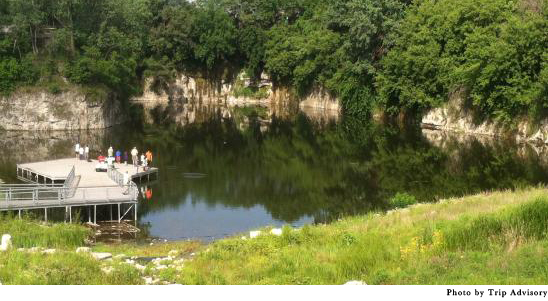
On this outing, we’ll actually start in Bridgeport and finish up in the South Loop. I had Palmisano Park (2700 S. Halsted, Chicago) on last year’s list. We never made it, but I plan on getting there this summer.
“This is the site of an ancient coral reef dating back to the Silurian age 400 million years ago. Dolomite limestone formed, and fossils that were found here are now in the collections of several area museums including Field Museum of Natural History. In the late 1830s, the land was purchased by the Illinois Stone and Lime Company which began quarry operations. Within a short time, one of its partners, Marcus Cicero Stearns took over and renamed the quarry. Stearns was an early Chicago settler who got his start by opening a supply store for workmen who blasted out rock to build the Illinois and Michigan Canal. Even after Stearns died in 1890, the quarry continued operating under his name until 1970. For the next few decades, the site was used as a landfill for clean construction debris. After the dumping ended, the idea of transforming the site into a new park emerged. The new park would be especially important because the surrounding Bridgeport neighborhood had long suffered from a lack of adequate green space.” – Chicago Park District
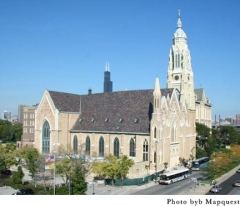 After our stroll through Palmisano Park, we’ll head to Holy Family Catholic Church (1080 W. Roosevelt Road).
After our stroll through Palmisano Park, we’ll head to Holy Family Catholic Church (1080 W. Roosevelt Road).
“Back in 1857, a priest named Father Arnold Damen began construction on a new church that would become one of Chicago’s most beautiful. It was called “Holy Family Church” and is Chicago’s second oldest church and the original Jesuit Parish in Chicago. According to legend, when the Chicago Fire started in 1871 (a few blocks east), it was spreading toward the church when Father Damen, who was in Brooklyn preaching a parish mission, was advised of the danger and invoked Our Lady of Perpetual Help to save the building, promising to light seven candles before Our Lady’s statue if the church was spared from the fire. The wind shifted, the church was spared, and the candles were lit. Seven electric lights burn to this day at Our Lady’s shrine in the east transept of the church. Interestingly, Patrick and Catherine O’Leary, owners of the world’s most famous cow, were parishioners.” – Holy Family Church
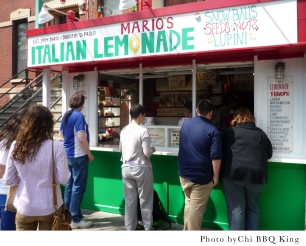 An eight minute walk from Holy Family Church is Mario’s Italian Lemonade (1068 W. Taylor Street). They don’t just serve lemonade flavored Italian ice. They have a long list of flavors.
An eight minute walk from Holy Family Church is Mario’s Italian Lemonade (1068 W. Taylor Street). They don’t just serve lemonade flavored Italian ice. They have a long list of flavors.
“Mario’s Italian Lemonade has been serving a unique form of drinkable Italian Ice from its Italian tricolor shack since 1954, when it was opened by Mario and Dorothy DiPaolo at 1068 W. Taylor Street in the University Village neighborhood of Chicago. It remains essentially unchanged in the same location today, still owned by the DiPaolo family. On warm summer night, it lights up the entire street and draws heavy crowds.” – Mario’s Italian Lemonade Facebook Page
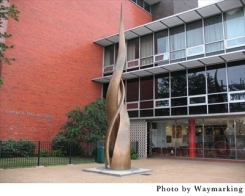 Our last stop will take us past the Chicago Fire Academy (558 W. De Koven Street). It is here we will check out the Pillar of Fire. The Pillar of Fire represents the spot where the Great Chicago Fire was believed to have started.
Our last stop will take us past the Chicago Fire Academy (558 W. De Koven Street). It is here we will check out the Pillar of Fire. The Pillar of Fire represents the spot where the Great Chicago Fire was believed to have started.
“Egon Weiner (1906 –1987) Chicago sculptor and professor at the Art Institute of Chicago (1945–1971) created this 33-foot-tall abstract bronze sculpture for the grounds of the Robert J. Quinn Fire Academy, where Chicago’s firefighters now train. The sculpture was designed for the site of the origin of the fire and in 1971, one hundred years after, it was designated a Chicago Landmark.” – Chicago Public Art
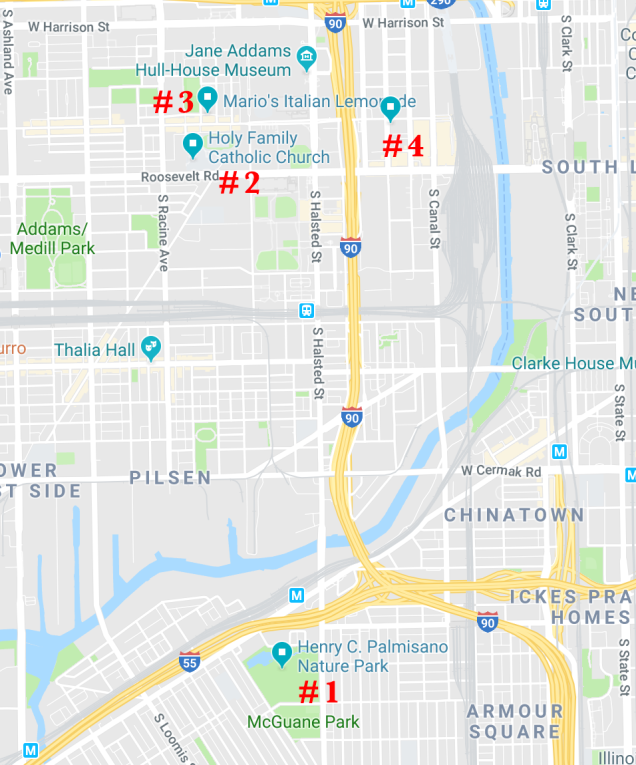
Outing #19 – St. Charles, Illinois
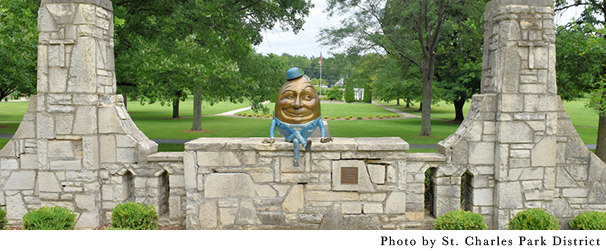
Our first stop is to Mt. Saint Mary Park (Route 31 at Prairie Street).
“An anthropomorphic egg sculpture titled “Mr. Eggwards” is permanently sitting on a wall in Mount Saint Mary Park (He is securely anchored, so it’s unlikely he’ll have a great fall). Since 2007 the park has featured an exhibit called “Sculpture in the Park,” which features nearly 20 permanent and temporary (mostly bronze) sculptures by artists from around the nation. The works range from the sublime to the abstract to the strange, and may be seen along a 5/8 mile walking path. The permanent sculptures include depictions of a frog, a boy and rabbit sitting on a turtle, a pear, etc. Some of the sculptures are 15 feet tall.” – Roadside America
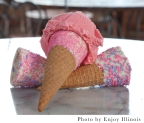 After walking and enjoying the public art, we will have to cool off with some ice cream from Kimmer’s (W, 1 Illinois Street), home of the Sparkle Cone. I already love sugar cones, but sparkly sugar cones sound amazing! On Wednesdays, if you were something sparkly, you’ll get a Sparkle Cone upgrade!
After walking and enjoying the public art, we will have to cool off with some ice cream from Kimmer’s (W, 1 Illinois Street), home of the Sparkle Cone. I already love sugar cones, but sparkly sugar cones sound amazing! On Wednesdays, if you were something sparkly, you’ll get a Sparkle Cone upgrade!
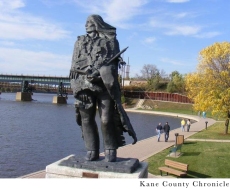 After we have consumed every single sparkle, we cross the Fox River and check out the Ēkwabet statue.
After we have consumed every single sparkle, we cross the Fox River and check out the Ēkwabet statue.
“The project was the vision of Bill Berg, a life long resident of St. Charles. He met sculptor Guy J. Bellaver, who was attending his first Rotary meeting after having just moved to St. Charles with his family – and the rest, as they say, is history. The sculpture was sited and dedicated in May, 1988 and named Ēkwabet by the Potawatomi Nation in a 1989 Naming Ceremony. Ēkwabet means “Watching Over”, and was given that name by Billy Daniels of the Forest County Potawatomi Tribe.” – Ekwabet Website
 The last stop is River View Miniature Golf (8 North Avenue). Waterfall, windmill, and lighthouse, what more could you ask for from an 18 hole mini golf course? While we are putting away, we will be sure to enjoy the view overlooking the Fox River.
The last stop is River View Miniature Golf (8 North Avenue). Waterfall, windmill, and lighthouse, what more could you ask for from an 18 hole mini golf course? While we are putting away, we will be sure to enjoy the view overlooking the Fox River.
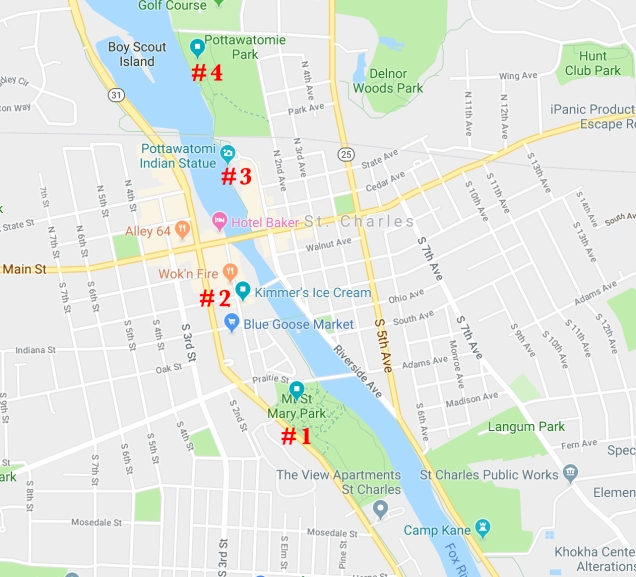
Outing #20 – West Town, Chicago

We’ll start this outing at a very unusual sculpture. The Shit Fountain (1001 N. Wolcott Avenue) is a reminder for dog owners to pick up after their furry friends.
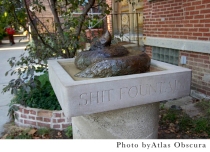 “Artist Jerzy S. Kenar installed the public poop as a winking tribute to all of the dogs in the neighborhood who are known to trample and defecate upon his flowers. The metal make sits atop a three-foot sandstone pedestal like a classical Grecian bust and slowly dribbles water into a shallow basin. While the piece may seem disgusting or in poor taste, but it has garnered almost no outcry from the community who seem to truly enjoy the whimsical statement. Technically the statue sits on Kenar’s private property so the city is not concerned either.” – Atlas Obscura
“Artist Jerzy S. Kenar installed the public poop as a winking tribute to all of the dogs in the neighborhood who are known to trample and defecate upon his flowers. The metal make sits atop a three-foot sandstone pedestal like a classical Grecian bust and slowly dribbles water into a shallow basin. While the piece may seem disgusting or in poor taste, but it has garnered almost no outcry from the community who seem to truly enjoy the whimsical statement. Technically the statue sits on Kenar’s private property so the city is not concerned either.” – Atlas Obscura
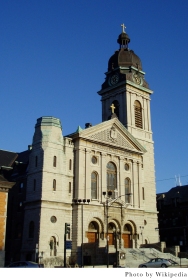 Our next stop is St. John Cantius Church (825 N. Carpenter Street). We’ll first ask for forgiveness for saying “shit”. We’ll then hopefully get a peek inside. In 2016 it was named the most beautiful church in America.
Our next stop is St. John Cantius Church (825 N. Carpenter Street). We’ll first ask for forgiveness for saying “shit”. We’ll then hopefully get a peek inside. In 2016 it was named the most beautiful church in America.
“Its unusual High Altar and the statuary on it can be traced back to the World’s Columbian Exposition of 1893. Of all the “Polish Cathedral” churches in Chicago, St. John Cantius stands closest to downtown. The imposing 195-foot tower is easy to spot from the nearby Kennedy Expressway. St. John Cantius is particularly well-known for its program of solemn liturgies and devotions, treasures of sacred art and rich music. In 2012, an ambitious restoration returned the interior to its original splendor.” – Open House Chicago
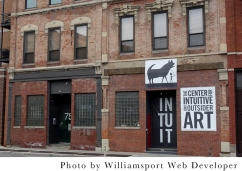 Next up is the Intuit: The Center for Intuitive and Outsider Art (756 N. Milwaukee Ave). Visitors under 18 are free and everyone else is $5.
Next up is the Intuit: The Center for Intuitive and Outsider Art (756 N. Milwaukee Ave). Visitors under 18 are free and everyone else is $5.
“Established in June 1991, Intuit is one of the premier museums in the world dedicated to presenting self-taught art, defined as the work of artists who demonstrate little influence from the mainstream art world and who instead are motivated by their unique personal visions.” – Intuit
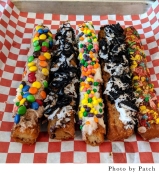 After taking in all that art and architecture, we will definitely be in need of a snack. One request from the kids was to get churros this summer. So, I was excited when I came across The Gringo (1202 W. Grand Ave). They offer churros, but they are not just any old churros. These things can be smothered in berries, sprinkled with Pop Rocks or covered in toppings like Oreos, Reeses Pieces and M&Ms. The kids are going to freak out!
After taking in all that art and architecture, we will definitely be in need of a snack. One request from the kids was to get churros this summer. So, I was excited when I came across The Gringo (1202 W. Grand Ave). They offer churros, but they are not just any old churros. These things can be smothered in berries, sprinkled with Pop Rocks or covered in toppings like Oreos, Reeses Pieces and M&Ms. The kids are going to freak out!
The last stop of the day, the Hubbard Street Mural Project (1030-1044 W. Hubbard Street). Well, it used to be the Hubbard Street Mural Project, today it is the B_Line.
 “The Hubbard Street Murals, on Hubbard between Ogden and DesPlaines in Chicago, were originally painted during the 1970s. A few years ago, Union Pacific Railroad began repairing and replacing the aging concrete train embankment, unfortunately affecting the artwork in the process. The HSMP began seeking interested individuals and groups to restore some panels and bring new artwork to the refurbished embankment. With support from Union Pacific Railroad, the Chicago Department of Cultural Affairs and the Illinois Arts Council, the mural project lives on. The new murals maintain some of the original themes: wildlife, endangered species, ethnicity, and Chicago history.” – Hubbard Street Mural Project
“The Hubbard Street Murals, on Hubbard between Ogden and DesPlaines in Chicago, were originally painted during the 1970s. A few years ago, Union Pacific Railroad began repairing and replacing the aging concrete train embankment, unfortunately affecting the artwork in the process. The HSMP began seeking interested individuals and groups to restore some panels and bring new artwork to the refurbished embankment. With support from Union Pacific Railroad, the Chicago Department of Cultural Affairs and the Illinois Arts Council, the mural project lives on. The new murals maintain some of the original themes: wildlife, endangered species, ethnicity, and Chicago history.” – Hubbard Street Mural Project
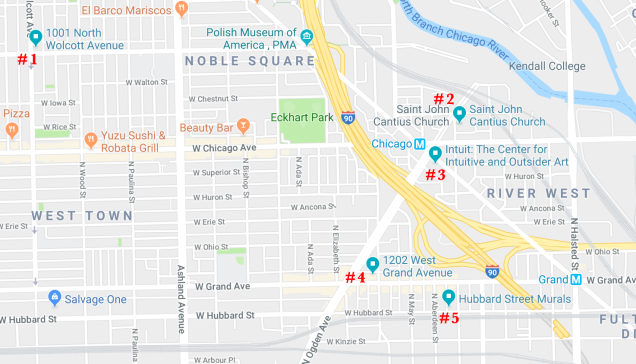
So, that covers the 2019 outings. It’s a lot and we will most likely not cover everything, but we are excited to try!